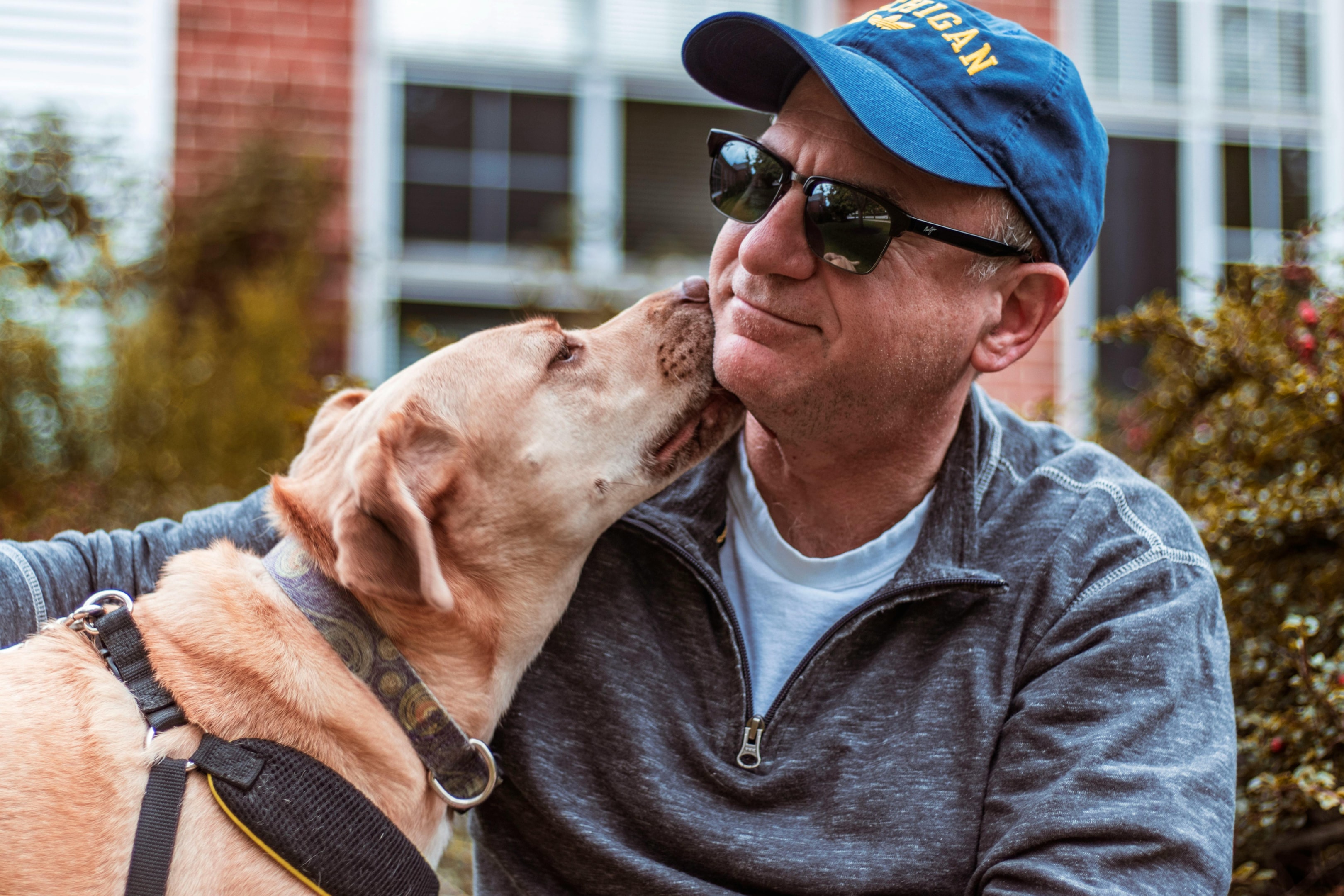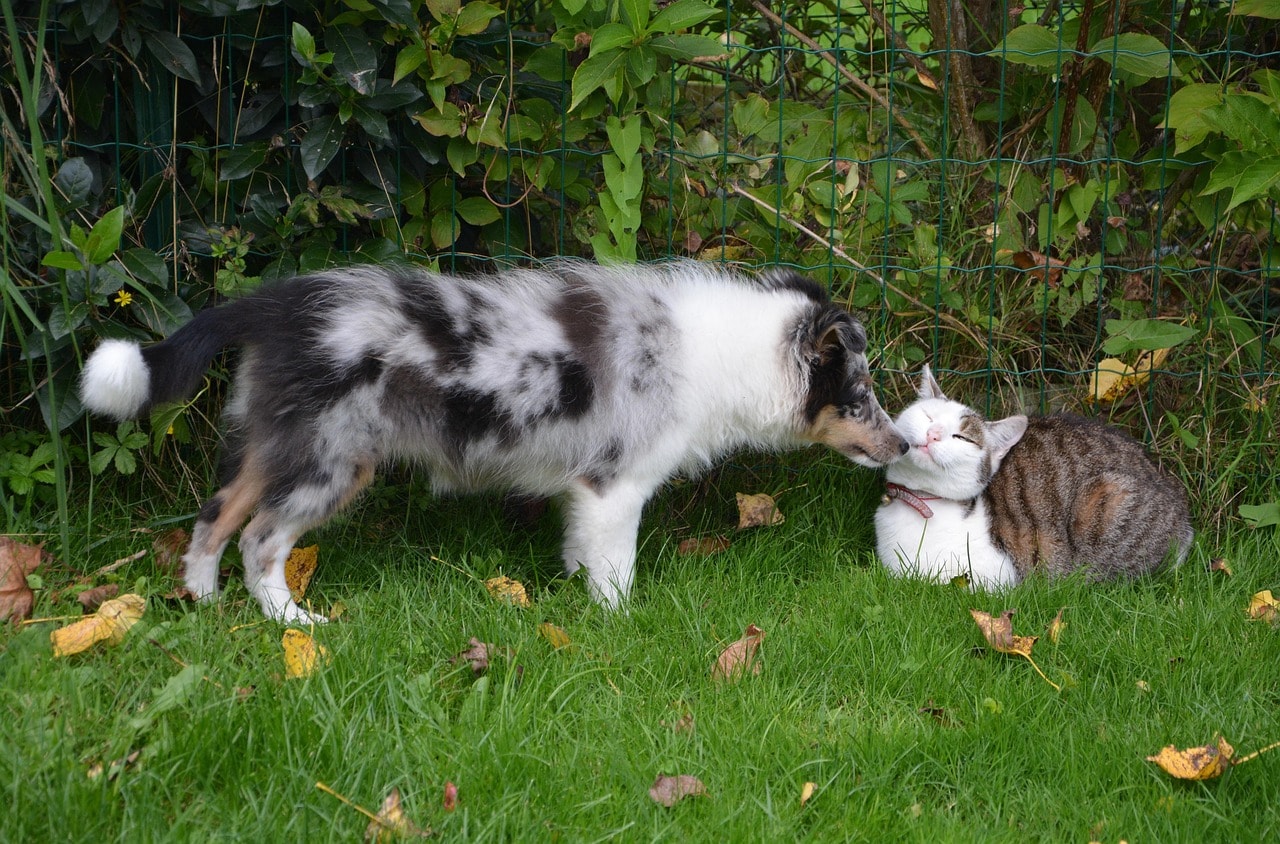
Superior Nourishment: Senior Pet Diets through their Golden Years
There’s something uniquely beautiful about sharing life with a senior dog or cat. Their slower steps, softer expressions, and seasoned wisdom carry a sweetness all their own. But with age also comes change, some subtle, some more noticeable. And for many dogs and cats, the path to a healthier and more comfortable old age begins with one of the most powerful tools we have: nutrition.
As a cat or dog ages, their body doesn’t function the same way it did at three or five, or even seven years old. Organs change. Metabolism shifts. Muscle loss accelerates. Joints stiffen. The immune system becomes more fragile. And all of these changes mean that your senior dog or cat requires a different type of diet than they did earlier in life.
Just like humans, elderly pets age at different speeds. Some remain spry and sharp well into their golden years, while others show early signs of slowing down. One thing is universal: nutrition plays a significant role in how gracefully they age. The right diet is the building block of health and can support healthy joints, maintain healthy muscle mass, keep the mind sharp, and even reduce the risk of chronic illnesses.
Why does nutrition matter so much for aging pets? How do diet choices make a powerful difference in our elderly pets' lives? We'll explore these topics so you can make better decisions for your elderly companion.

When Is a Dog or Cat Considered Senior?
Dogs age at different rates depending on breed and size:
-
Small breeds (under 20 lbs): 10–11 years
-
Medium breeds (21–50 lbs): 8–9 years
-
Large breeds (51–90 lbs): 7–8 years
-
Giant breeds (over 90 lbs): 5–6 years
Small-breed dogs (under 20 lbs) generally have the longest lifespans, often reaching 10–11 years before they’re considered seniors. Medium-breed dogs (21–50 lbs) tend to enter their senior stage a little earlier, around 8–9 years of age. Large-breed dogs (51–90 lbs) usually begin showing signs of aging at about 7–8 years, while giant-breed dogs (over 90 lbs) age the fastest, often becoming seniors by 5–6 years old. These differences are tied to growth rates, genetics, and metabolic demands, and body weight making size an important factor when determining when a dog is truly “senior.”
But calendar age is only part of the equation. What matters more is biological age, which is influenced by genetics, weight, metabolism, lifestyle, chronic disease, and nutrition across life. A 10-year-old Chihuahua may behave like a middle-aged adult, while a 7-year-old Great Dane may already be showing clear signs of aging. Generally speaking, you want to transition your pet to a senior diet at around seven or eight years of age, tweaking it to their needs and possible illnesses as they age.
Cats (all breeds and sizes):
-
Mature: 7–10 years
-
Senior: 11–14 years
-
Geriatric: 15+ years
Cats don’t follow the size-related aging patterns seen in dogs, so their senior stages are based on life stage instead. Most cats enter the “mature” phase around 7–10 years old. By 11–14 years, they’re considered seniors and may begin showing more noticeable changes. Once cats reach 15 years or older, they fall into the geriatric category, where they typically require more frequent monitoring and specialized care. Despite their small size, many cats age slowly and can live well into their late teens with proper health support.

What Changes Inside a Senior Pet’s Body?
Aging affects every body system—digestive, metabolic, immune, musculoskeletal, and cognitive. Because of this, nutritional requirements shift from those of a young adult animal.
Slower Metabolism
Senior pets commonly experience a slower metabolic rate. This means they may burn fewer calories at rest, making weight management more challenging. Obesity is one of the most common health problems in aging pets and can worsen arthritis, diabetes, heart disease, and respiratory issues.
However, a slower metabolism doesn’t mean they need fewer nutrients, it means they need more nutrient-dense foods without excess calories.
As dogs age, they burn fewer calories at rest. Even if your dog eats the same amount of food, they may start gaining weight simply because their metabolic rate has dropped.
Changes in Digestive Efficiency
Older dogs and cats often struggle to digest fat or absorb certain vitamins as effectively as they once did. Their gastrointestinal tract may become sensitive, leading to various digestive issues like:
-
Softer stools or constipation
-
Reduced nutrient absorption
-
Food intolerances
-
Difficulty maintaining weight
Diet choices that support gut health, like fiber, probiotics, and highly digestible proteins, become crucial. Older dogs produce lower stomach acid, have slower gastric emptying, reduced digestive enzymes, and can develop gut microbiome imbalances. The nutritional implication is to offer highly digestible diets and the consideration of adding probiotics to the diet.

Muscle Loss (aka Sarcopenia)
Senior pets naturally lose lean muscle unless their diet is adjusted. Maintaining muscle mass keeps them mobile, supports joint health, and helps regulate metabolism. Without enough high-quality protein, older pets may become frail. This is one of the most significant age-related changes is the natural loss of lean muscle. Sarcopenia can lead to weakness, poor mobility, increased frailty, reduced metabolism, and the loss of independence. Seniors often require more high-quality protein, not less.
An appropriate senior diet helps maintain muscle mass, which is crucial for stabilizing joints and reducing mechanical stress on aging limbs. High-quality, highly digestible protein fuels muscle repair and counters age-related sarcopenia, while controlled calories prevent excess weight gain, one of the most powerful contributors to arthritis progression.
Joints and Mobility Decline
Up to 80% of dogs over 8 years show evidence of arthritis. Nutrition plays a critical role in reducing inflammation, protecting cartilage and supporting mobility.
Diets for senior dogs can help modulate chronic, low-grade inflammation. This inflammation naturally increases with age and contributes to joint discomfort, stiffness and slower recovery after exercise. Anti-inflammatory nutrients such as omega-3 fatty acids (EPA and DHA), antioxidants, and certain phytonutrients help regulate the body’s inflammatory pathways and reduce the production of pro-inflammatory mediators that accelerate joint wear.
Adequate nutrition also supports cartilage health, which is especially important because cartilage is avascular (does not have blood irrigation) it has a limited natural ability to repair itself. Nutrients such as glucosamine, chondroitin sulfate, collagen peptides, manganese, and vitamin C support the maintenance of the extracellular matrix, slow the breakdown of cartilage, and can enhance the body’s ability to produce new cartilage cells. Diets formulated for joint health typically contain combinations of these compounds to protect articular surfaces and improve long-term mobility.
Weakened Immune System
Nutritional deficiencies or inadequate antioxidant intake can contribute to chronic inflammation and decreased resilience to infections. Immune-supporting nutrients like vitamins E and C, beta-carotene, omega-3 fatty acids, and key trace minerals help mitigate this decline. The immune system naturally becomes less effective with age, increasing susceptibility to:
-
Infections
-
Cancer
-
Chronic inflammation

Cognitive Changes
Cognitive Dysfunction Syndrome (CDS)—similar to dementia in humans—is common in elderly pets. Nutrition that supports brain health can significantly improve quality of life. Nutrition that supports the brain includes:
-
Omega-3s
-
MCT oil
-
Antioxidants
-
B vitamins
Supplements That Benefit Many Senior Pets
While not every pet needs supplements, many elderly pets benefit from targeted support:
-
Omega-3 fatty acids for joints, brain, and skin
-
Probiotics for gut and immune health
-
Glucosamine/chondroitin for mobility issues
-
Vitamin B-complex for energy and neurological support
-
Antioxidants for brain and immune health
-
Joint-support and functional mushrooms (e.g., reishi, maitake) for immune balance
Always consult a veterinarian before starting supplements, particularly if your pet has chronic conditions.

High-Quality Protein is a Building Block for Senior Pets
A common myth, is that healthy senior pets need less protein. This could not be further from the truth, unless they have advanced kidney disease. Protein promotes muscle mass, immune system function, healthy skin and coat, hormone production and organ health.
Easily digestible sources like poultry, eggs, fish, or certain plant-based ones can help older pets absorb amino acids efficiently, especially if digestion has slowed. Cats, being obligate carnivores, rely even more heavily on animal protein. Without it, they rapidly lose muscle and energy.A good senior diet ensures high protein quality, appropriate amounts, and digestibility so the body can use it effectively.
Weight Management: Preventing Obesity and Frailty
Older dogs seem to battle weight issues and these can fall into two extremes, either obesity or frailty. Both significantly impact longevity.
Body Condition Score
A veterinarian can help determine whether an elderly pet needs a weight-loss plan, weight-gain plan, or maintenance plan. They can determine this using body condition score, a hands on assessment that evaluates fat, lean body mass and muscle coverage on your pet and grades them on a scale of 1-5 (1 being severely underweight or caquexic and 5 being morbidly obese). This assessment is used in younger dogs and cats well as aging dogs and cats.
Obesity
Excess weight contributes to arthritis and pain as well as heart and respiratory strain. Continued obesity accross time can result in insulin resistance and diabetes. Reduced mobility and a shortened lifespan would also be expected in pets dealing with obesity. A reduced-calorie yet nutrient-dense diets help maintain lean body weight without sacrificing nourishment.
Frailty (Unintentional Weight Loss)
Some pets lose weight due to sarcopenia, dental disease that causes pain when attempting to eat, poor appetite due to undelying conditions, chronic disease or age related digestive inefficiency. For these pets, higher-calorie or enhanced-palatability diets may be necessary. Supplements, toppers, and feeding strategies can ignite interest in food.
The Role of Antioxidants in Healthy Aging and Brain Health
Oxidative stress increases with age, contributing to chronic inflammation, cognitive decline, and organ dysfunction. Antioxidants help protect cells from damage. Beneficial antioxidants include Vitamin E, Vitamin C, Beta-carotene, Lutein, Selenium, and Plant polyphenols (found in berries, mushrooms, turmeric, etc.). These nutrients work synergistically with immune and brain health, improving overall vitality and support brain function.
Cognitive decline is common in senior dogs and cats and is part of the aging process. Nutritional strategies can support memory, alertness, and mood. DHA is a structural component of brain tissue. Supplementation supports mental sharpness and reduces signs of cognitive dysfunction. Brain cells are highly vulnerable to oxidative stress. Vitamins E and C, carotenoids, and polyphenols all help slow cognitive aging. Commonly sourced from coconut oil, MCTs provide an alternative energy source for aging brain cells. Some studies show improvements in attention, sleep-wake cycles, and responsiveness. B vitamins support neurological function, energy metabolism, and stress resilience.

Functional Mushrooms and Supporting Senior Pet Health
Functional mushrooms have become increasingly popular in veterinary wellness—and for good reason. These mushrooms are rich in bioactive compounds that support immune balance, reduce inflammation, and promote overall vitality. For elderly dogs and cats, functional mushrooms blends can provide a gentle but meaningful boost to multiple body systems impacted by aging.
Immune System Support
As pets age, their immune system naturally declines. Functional mushrooms contain beta-glucans which are powerful polysaccharides that help “train” the immune system to respond more effectively to pathogens without overstimulation. This balanced support can be especially helpful for aging pets prone to infections, slow wound healing, or chronic inflammation.
Antioxidant and Anti-Inflammatory Benefits
Mushrooms are packed with antioxidants such as polyphenols, ergothioneine, and selenium. These compounds help neutralize free radicals that contribute to aging, cognitive decline, and chronic disease. By reducing systemic inflammation, mushrooms can also support joint comfort and mobility by ultimately reducing joint pain. Chaga and Reishi have been studied to have renoprotective qualities, that can stave off kidney disease, through their antioxidant and antiinflamatory benefits.
Top Functional Mushrooms to Consider for Elderly Pets
Below are some of the most recognized mushrooms for aging dogs and cats:
-
Reishi (Ganoderma lucidum): Known for its calming effects, immune balance, and cardiovascular and renal support.
-
Turkey Tail (Trametes versicolor): Rich in beta-glucans, it offers strong immune-modulating properties.
-
Lion’s Mane (Hericium erinaceus): Supports cognitive function, nerve health, and may help slow age-related cognitive decline.
-
Cordyceps (Cordyceps militaris): Helps maintain energy, respiratory function, and stamina, useful for aging pets that tire easily.
-
Maitake (Grifola frondosa): Supports metabolic health, immune function, and healthy weight maintenance.
-
Shiitake (Lentinula edodes): Provides cardiovascular support and rich antioxidants.
-
Agaricus blazei: A potent mushroom for immune support with strong antioxidant activity.
-
Chaga (Inonotus obliquus) boosts immune system, fights cancer, and lowers cholesterol.
Choosing Mushroom Products Safely
When considering mushroom supplements for elderly pets:
-
Look for hot-water or dual extracts, which ensure active compounds are concentrated and bioavailable.
-
Choose products tested for pesticides, heavy metals, and microbial safety.
-
Avoid formulas with unnecessary fillers or artificial flavorings.
-
Consult your veterinarian if your pet has chronic conditions or is taking medications, as mushrooms can subtly enhance immune activity.
Functional mushrooms aren’t a cure-all, but they can be a remarkably supportive piece of a comprehensive senior wellness plan. Dog foods will rarely have functional mushrooms included in their ingredients so it's important to consider their addition separately. When used correctly, they help enhance resilience, vitality, and comfort in aging dogs and cats.

The Right Diet Can Transform Your Aging Dog's Life
Nutrition is one of the most powerful tools we have to improve the comfort, energy, mobility, and longevity of senior dogs. By choosing a diet that aligns with your dog's medical needs and nutritional goals, you offer them not only more years, but better years. Diet is not a one-size-fits-all deal. If your pet suffers from a chronic illness, a senior diet will not be adequate. Certain conditions require a reduction of certain elements or an increase in others.
Every dog is unique, and aging is not a one-size-fits-all process. Partner with your veterinarian or board certified veterinary nutritionist to choose the ideal category of diet, monitor progress, and adjust as your dog’s needs evolve.
Clinical Nutrition: Organ Support Through Elderly Pet Diets
Chronic disease becomes more common as pets age. Early nutritional intervention often slows progression and improves comfort. Food formulated specifically for a chronic illness can improve a pet's quality of life and slow the progression of these diseases.
Kidney Support
For dogs and cats in the early stages of kidney disease, diet plays a critical therapeutic role. These formulas usually have lower protein and emphasize high-quality, highly digestible protein sources that produce fewer waste products for the kidneys to handle. Phosphorus restriction is a central feature, as excessive phosphorus levels accelerates kidney damage. Many kidney-support diets also include omega-3 fatty acids, which help reduce renal inflammation and slow the progression of disease. Additionally, they are formulated to support increased hydration, either through higher moisture content or by encouraging greater water intake, which assists the kidneys in flushing out toxins more effectively.
Heart Support
Dogs and cats with cardiac disease often benefit from nutrient profiles foods designed to reduce the workload on the heart. These foods typically contain controlled sodium levels to help manage fluid retention and blood pressure. Nutrients such as taurine, especially vital in cats but also useful in certain dog breeds,and Coenzyme Q10 support proper heart muscle function and cellular energy production. Many cardiac diets also include added antioxidants and omega-3 fatty acids, which help inflammation go down and may improve cardiac efficiency. Together, these nutritional adjustments can support overall cardiovascular health and enhance quality of life. Make sure to pick heart healthy treats, without excessive sodium, if your pet is on a heart support diet.
Liver Support
Nutrition for dogs with liver disease focuses on easing the liver’s workload while supporting regeneration. These food diets prioritize high-quality, highly digestible proteins that provide essential amino acids without overwhelming the organ. For dogs with specific conditions like copper storage hepatopathy, maintaining controlled copper levels in the diet is critical. Additionally, liver-support formulas often include antioxidants such as vitamin E, SAMe (S-adenosylmethionine), and other nutrients that help neutralize oxidative stress and promote healthy liver function. This multi-faceted nutritional approach helps protect liver cells and supports recovery.
Supporting Gut and Digestive Health Through Senior Diets
The gut plays a major role not only in digestion but also in immunity and inflammation. Adult dogs and cats often develop sensitive stomachs as they age, making gut support essential.
Prebiotics, Fiber and Probiotics
Prebiotic and fiber feed healthy gut flora and help regulate stool quality.
Probiotics are helpful microorganisms support:
-
Immune function
-
Digestion
-
Gut integrity
-
Reduced gastrointestinal upset
Practical Tips for Feeding Elderly Pets
Reading a label on dog food
While banced diets are important, many owners are at a loss on how to evaluate commercial dog kibble and read labels with understanding. Learning to read the ingredient label is one of the most powerful tools you have. Start by looking at the first five ingredients which will make up the bulk of the diet. Ideally, you should see high-quality, clearly named protein sources such as “chicken,” “turkey,” or “salmon,” rather than vague terms like “meat meal” or “animal by-product.” Whole grains, vegetables and legumes (look for things like beet pulp, carrots, psyllium) can provide valuable fiber and nutrients, but they should not overshadow the protein source. Next, look for functional ingredients that support senior dogs, such as omega-3 fatty acids (often listed as fish oil or salmon oil), joint-support nutrients, antioxidants, and easily digestible carbohydrate sources. Rather than a specific calorie content, check the Guaranteed Analysis to confirm appropriate protein levels and to ensure fat and calories match your dog’s activity level. Finally, pay attention to the AAFCO nutritional adequacy statement, it should confirm that the food is complete and balanced for adult maintenance or all life stages. This simple label-reading routine helps you distinguish between marketing claims and true nutritional quality.
When reviewing ingredient labels, it’s also important to pay attention to the types of preservatives used. While all preservatives in commercial pet foods must be approved for safety at regulated levels, some synthetic preservatives, such as BHA (butylated hydroxyanisole), BHT (butylated hydroxytoluene) and ethoxyquin, have been the subject of long-standing debate because high doses in laboratory settings have shown the potential to contribute to oxidative stress or cellular changes. This doesn’t mean they cause cancer in pets at the levels used in dog food, but many owners and veterinarians prefer to avoid them out of caution, especially for senior dogs with chronic inflammation or a history of health issues. If you want to minimize exposure to these ingredients, look for foods preserved with natural antioxidants such as mixed tocopherols (vitamin E), rosemary extract or vitamin C. Choosing a balanced senior dog diet that relies on natural preservation methods can reduce your dog’s exposure to synthetic additives while still maintaining freshness and nutritional stability.
Increasing Palatability of Senior Dog Food
Loss of appetite is common in elderly pets. Dental disease, nausea, pain, or sensory decline can all reduce interest in food and contribute to difficulties to gain weight even when feeding a balanced diet. Fortunately, palatability can often be improved by warming wet dog foods to enhance aroma, switching textures (pâté, minced, stews, etc.), adding healthy toppers (broth, pumpkin, fish oil, etc.), feeding smaller but frequent meals and using elevated bowls for arthritic pets.
Other Nutrition Tips
-
Schedule senior checkups every 6–12 months to catch changes early.
-
Transition food gradually. If you're switching your pet over to senior dog food, you should do so over the course of 7–10 days, to avoid stomach upset.
-
Monitor weight monthly. Should your pet have weight gain or loss, your vet can help adjust portions or food type as needed.
-
Watch for early signs of nutritional deficiencies. Look for things like coat dullness or reduced energy.
-
Consider both wet and dry foods depending on needs.
-
Use feeding puzzles to stimulate the mind and encourage activity.
-
Try nutritionally dense treats in addition to your pet's senior dog food to add nutrients ingested by your older dogs.

Nutrition Is a Cornerstone of Healthy Aging
An elderly companion's diet is not simply a daily necessity, it’s one of the most powerful tools you have to support their well-being, longevity and overall health. Tailoring cat and dog foods to their stage of life ensures your pet's energy requirements are covered, helps protect joints, maintain strong muscles, support cognitive health, reduce inflammation, and keep chronic diseases at bay.
Most importantly, proper nutrition allows your senior dog to enjoy their golden years with comfort, happiness, and vitality. With mindful feeding strategies and guidance from your veterinarian, you can ensure your cherished companion ages gracefully, with the full quality of life they deserve. Senior dog food helps you achieve a complete and balanced diet that will support optimal body condition, digestive health, immune system health, healthy joints and cognitive function.
If you're interested in adding fresh food or homemade food, make sure you consult a board certified veterinary nutritionist. Veterinary nutrition is complex, especially in older pets. Nutritionists can help make sure all essential nutrients, optimal calorie content and nutritional needs for your individual pet are covered. Their tailored senior dog diet will take into account your dog's specific needs.
Your senior dog has given you years of loyalty, companionship, and joy. Thoughtful nutrition in pet diets is one of the most meaningful gifts you can give them in return.
-



